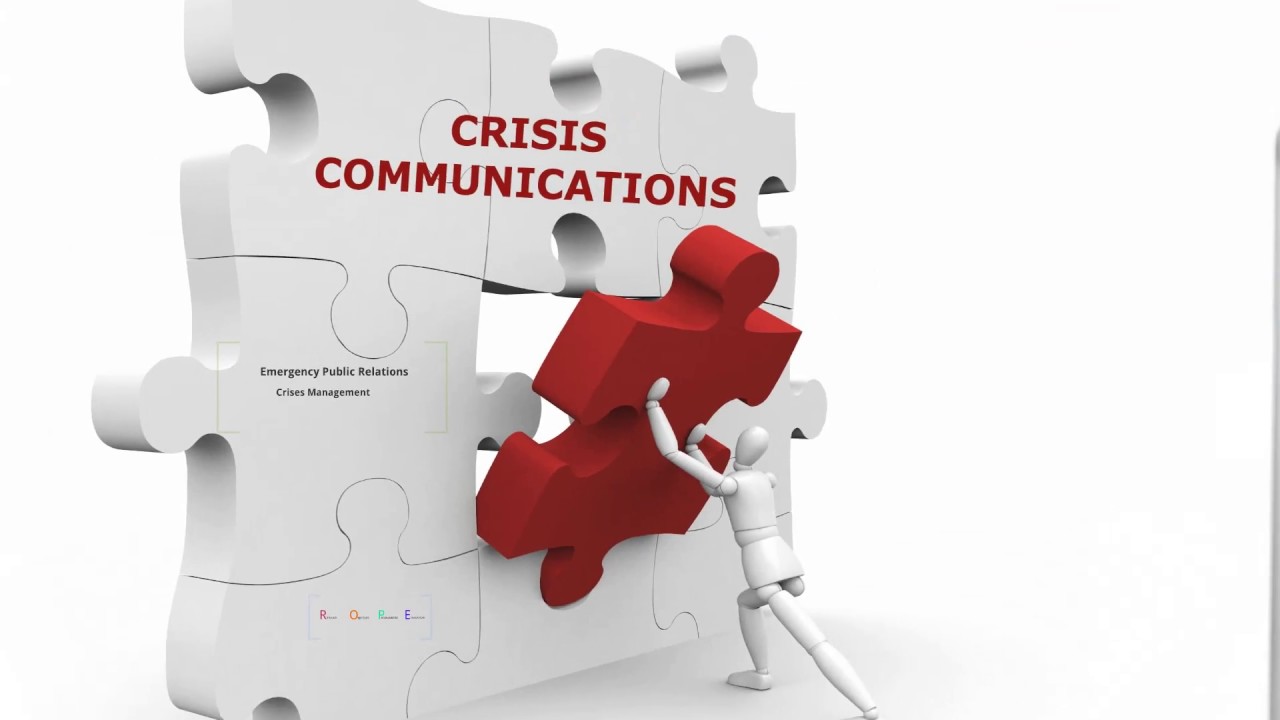Business Crisis Communication: Responding to Public Relations Nightmares
Written by harrison

Understanding the Importance of Crisis Communication
Proactive vs. Reactive Strategies:
Distinguish between proactive and reactive strategies in crisis communication. Proactive approaches involve anticipating potential crises and having communication plans in place. Reactive strategies, on the other hand, focus on responding promptly and effectively when a crisis emerges. A combination of both is crucial for comprehensive crisis management.
Impact on Reputation:
Acknowledge the profound impact a crisis can have on a company's reputation. Swift and transparent communication is key to mitigating reputational damage. Failure to address public concerns promptly can lead to prolonged negative perceptions and potential long-term harm to the brand.
Developing a Crisis Communication Plan
Identify Potential Crisis Scenarios:
Conduct a thorough risk assessment to identify potential crisis scenarios specific to the industry and business. Understanding potential challenges allows for the development of targeted communication plans tailored to different types of crises.
Establish a Crisis Communication Team:
Assemble a dedicated crisis communication team comprising key stakeholders, including executives, communication professionals, and legal advisors. Designate roles and responsibilities to ensure a coordinated and efficient response during a crisis.
Timely and Transparent Communication
Rapid Response Protocols:
Implement rapid response protocols to address crises promptly. Establish communication channels and procedures to disseminate information internally and externally. A quick response demonstrates accountability and a commitment to transparency.
Open and Honest Communication:
Adopt an open and honest communication style. Provide accurate information about the crisis, its causes, and the steps being taken to address the situation. Transparency builds trust with stakeholders and the public.
Utilizing Social Media and Digital Platforms
Monitoring Social Media:
Utilize social media as a primary tool for communication during a crisis. Monitor online conversations, address concerns, and provide updates regularly. Social media platforms serve as direct channels for engaging with the public and managing the narrative.
Crisis-Specific Websites:
Create crisis-specific websites or landing pages to centralize information related to the crisis. These dedicated platforms allow businesses to control the narrative, share updates, and address frequently asked questions in real-time.
Rebuilding Trust and Reputation
Apologize and Take Responsibility:
If the crisis stems from company actions, issue a sincere apology and take responsibility. Acknowledge any mistakes made and outline concrete steps being taken to rectify the situation. A genuine apology can go a long way in rebuilding trust.
Demonstrate Corrective Actions:
Illustrate the corrective actions being implemented to prevent a recurrence of the crisis. Whether it involves internal policy changes, increased oversight, or enhanced safety measures, showcasing tangible steps reassures stakeholders of the company's commitment to improvement.
Conducting Post-Crisis Analysis
Post-Mortem Evaluation:
Conduct a thorough post-crisis analysis to evaluate the effectiveness of the crisis communication strategy. Identify strengths, areas for improvement, and lessons learned. This analysis informs future crisis communication planning.
Stakeholder Feedback:
Seek feedback from stakeholders, including customers, employees, and investors. Understanding their perspectives helps in refining communication strategies and addressing lingering concerns post-crisis.
Leveraging Media Relations in Crisis Communication
Media Engagement Strategies
Establish Media Contacts:
Maintain a well-established list of media contacts before a crisis occurs. Building relationships with journalists and media outlets can facilitate smoother communication during challenging times. Provide journalists with accurate information promptly to shape the narrative.
Press Conferences and Briefings:
Consider organizing press conferences or briefings to address the media directly. These platforms allow for in-depth explanations, clarifications, and answering journalists' questions. Well-managed press events can help regain control of the narrative and present the company's perspective effectively.
Managing Social Media During a Crisis
Social Listening Tools:
Utilize social listening tools to monitor online conversations and sentiments related to the crisis. Understanding public perceptions in real-time allows for agile responses and adjustments to communication strategies. Social media insights provide valuable data for refining crisis communication approaches.
Engaging with Influencers:
Identify and engage with influencers or thought leaders within the industry. Collaborating with respected voices can help amplify positive messages and counteract negative narratives. Influencers can play a crucial role in shaping public opinion and supporting the company's communication efforts.
Legal Considerations in Crisis Communication
Consultation with Legal Advisors:
Work closely with legal advisors to ensure that all communication aligns with legal requirements and protects the company's interests. Legal experts can provide guidance on the content of public statements, minimizing legal risks associated with crisis communication.
Statements and Legal Language:
Craft public statements carefully, using language that is both transparent and legally sound. Avoid making statements that could be construed as admissions of guilt. Striking a balance between openness and legal prudence is essential in navigating the delicate legal aspects of crisis communication.
Employee Communication and Internal PR
Internal Communication Plans:
Develop robust internal communication plans to keep employees informed during a crisis. Employees are crucial ambassadors for the company, and clear, timely communication with them helps maintain a unified front. Address concerns, provide regular updates, and foster a sense of shared responsibility.
Employee Advocacy Programs:
Implement employee advocacy programs to leverage the support of employees in external communication efforts. Encourage employees to share positive company stories on social media and other platforms, contributing to a more favourable public perception during challenging times.
Coordinated Government and Community Relations
Collaboration with Authorities:
If the crisis involves regulatory or legal implications, collaborate with relevant authorities transparently. Engage in open communication with regulatory bodies and government agencies to demonstrate cooperation and a commitment to resolving the situation.
Community Outreach Initiatives:
Initiate community outreach programs to demonstrate the company's commitment to its local or global community. Engaging in positive initiatives, such as charitable activities or partnerships, can help rebuild trust and show a genuine dedication to corporate social responsibility.
Continuous Monitoring and Adaptive Strategies
Continuous Evaluation:
Maintain a continuous monitoring system for evolving developments related to the crisis. Be adaptive in communication strategies based on shifting circumstances. A dynamic approach ensures that communication efforts remain relevant and effective throughout the crisis lifecycle.
Scenario Planning for Future Crises:
Learn from the crisis at hand and incorporate insights into future scenario planning. Anticipate potential crises, refine communication strategies, and conduct drills to ensure the team is well-prepared for a range of challenges. Proactive planning enhances crisis communication efficacy over the long term.
Ethical Considerations in Crisis Communication
Transparency and Honesty
Upholding Ethical Standards:
Place a strong emphasis on transparency and honesty in all communications. Ethical crisis communication involves providing the public with accurate information, acknowledging mistakes, and avoiding deceptive practices. Upholding ethical standards builds credibility and fosters trust.
Avoiding Misleading Messaging:
Ensure that messaging avoids any form of misinformation or ambiguity. Misleading the public can exacerbate a crisis and lead to further damage. Clearly communicate the facts, acknowledging uncertainties if present, and commit to updating stakeholders as the situation evolves.
Stakeholder Engagement and Inclusivity
Inclusive Communication:
Adopt an inclusive approach in communication, considering the diverse perspectives of stakeholders. Address concerns and questions from various stakeholder groups, including customers, employees, investors, and the broader community. Inclusivity promotes a sense of fairness and ethical treatment.
Stakeholder Empowerment:
Empower stakeholders by providing them with the necessary information to make informed decisions. This may include details about the crisis, the company's response, and potential impacts. Ethical communication involves respecting stakeholders' right to be informed and involved in the decision-making process.
Apology and Responsibility
Genuine Apology:
A sincere and genuine apology is a fundamental aspect of ethical crisis communication. Express empathy for any harm caused and take responsibility for the company's actions or shortcomings. A heartfelt apology contributes to the restoration of trust and demonstrates a commitment to ethical conduct.
Corrective Actions and Accountability:
Outline concrete corrective actions taken to rectify the situation and prevent similar issues in the future. Ethical crisis communication goes beyond apologies to demonstrate accountability through tangible steps. Providing a roadmap for improvement reinforces the company's commitment to ethical behavior.
Balancing Transparency with Legal Considerations
Ethical Legal Compliance:
Navigate the delicate balance between transparency and legal considerations. While transparency is crucial, legal compliance is equally important. Work closely with legal advisors to ensure that communication aligns with ethical standards while safeguarding the company's legal interests.
Communicating Limitations Ethically:
Transparently communicate any limitations or constraints that may affect the amount or type of information shared. Ethical crisis communication involves being open about what can and cannot be disclosed while avoiding misleading impressions.
Continuous Learning and Improvement
Ethical Reflection and Evaluation:
After the crisis subsides, engage in ethical reflection and evaluation of the communication strategies employed. Assess the ethical implications of each decision, identifying areas of improvement and learning from the experience. Continuous ethical reflection contributes to ongoing improvement in crisis communication practices.
Stakeholder Feedback Integration:
Integrate feedback from stakeholders regarding the ethical dimensions of communication. Actively seek input on the perceived ethicality of the company's crisis response. Incorporating stakeholder perspectives enhances the ethical sensitivity of future crisis communication efforts.
Upholding Ethical Values for Long-Term Trust
Ethical Culture Building:
Cultivate an ethical organizational culture that prioritizes integrity, honesty, and transparency. An organization with a strong ethical foundation is better equipped to navigate crises ethically. Ethical values should be embedded in the company's DNA, influencing decision-making at all levels.
Building Long-Term Trust:
Recognize that ethical crisis communication is not just about managing the current crisis but also about building long-term trust. Companies that consistently uphold ethical standards in their communication foster lasting relationships with stakeholders and are more resilient in the face of future challenges.
Conclusion: The Role of Ethics in Crisis Resilience
In conclusion, ethical considerations are foundational to crisis communication resilience. By prioritizing transparency, inclusivity, genuine apologies, accountability, and a continuous commitment to ethical improvement, businesses can navigate crises with integrity. Upholding ethical values not only aids in immediate crisis management but also contributes to the enduring trust and credibility of the organization.








